
Archives
Contribute
| India Classical Period (700BCE-200BCE) – Economy And Politics |
Hardik Dixit
04/30/2021
Ashoka Expanded to the south by annexing Kalinga. He became a Buddhist and replaced the doctrine of “Expansion by War†with “Expansion by Dharmaâ€. Ashoka symbol is depicted in Figure – 2. It is also current national emblem of India. There were four divisions of army: infantry, cavalry, chariots, and elephants; under the control of patyÄdhyakshas, ashvÄdhyaksha, rathadhyaksha, and hastyÄdhyaksha respectively. According to the Greek traveler Megasthenese, Chandragupta Maurya’s army consisted of 600,000 infantry, 30,000 cavalry, 7,000 chariots, and 9,000 war elephants. Large focus on military weapons manufacturing contributed to economy and jobs. There were two main trade routes known as Uttarapatha and Dakshinpatha. The Uttrapatha stretched from north-west to Indo-Gangetic plains to Bay of Bengal. The distribution of NBPW (Northern Black Polished Ware) Pottery along the entire way suggests trade activity. There were evidences of material also getting transferred along the route. Lapiz lazuli from Afghanistan was found in Burdwan district of Bengal. There is also evidence of silver along the Uttrapatha. The Dakshinpatha has mention in Arthashastra. It stretches from Patliputra to Pratisthana on Godavari. The reconstructed trade routes in India about 300BCE is given in Figure 5. References 1 – A History of Ancient and Early Medieval India till 1200AD – Upinder Singh 2 - The cultural heritage of India, Volume II - Ramakrishna Mission - Institute of Culture, Calcutta 3 – India as Known to Panini – V.S. Agrawala. 1953, University of Lucknow. 4 – A Wonder that was India – A. L. Basham 1954 5 – Kautilya – The True Founder of Economics – Balbir Singh Sihag, 2014 Image references - Picture 1 – Okar Research Notes Picture 2 - **By Chrisi1964 - Detail of this file:, CC BY-SA 4.0, https://commons.wikimedia.org/w/index.php?curid=52617694 Picture 3 & 4 – Upinder Singh Book Picture 5 – Trade routes India 300BCE (Wikipedia) --------------------------------------- Mr. Hardik Dixit leads the Economy and Politics track in India Discovery Center's project on "Evolution of Indian Culture: Pre-history to 1947AD". More information and updates on the project are available at https://www.facebook.com/Evolution-of-Indian-Culture-An-IDC-Project-107749391111922 Information on India Discovery Center is at https://www.indiadiscoverycenter.org (c) Copyright 2021 India Discovery Center, Inc. All rights reserved.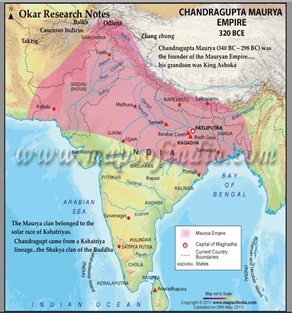 There were 16 organized mahajanapadas. Mahajanapadas had two types – monarchies (rajyas) and non-monarchies which are known as ganas or sanghas. Kashi and Kambhoj were known janapadas from Vedic times. Recent Janapadas were Avanti, Magadha, Anga, Vatsa and Vrijji. Single tribe janapadas were Mallas, Kashi and Panchal. Ganas were oligarchies, where power was exercised by a restricted group of families. Power was held by heads of leading kshatriya families. There was a chief known as Ganapati or Ganaraja. The gana’s greatest asset – governance through discussions – was also their greatest weakness as decision can take longer time. Chandragupta Maurya established the first known integrated empire as shown in Figure 1.
There were 16 organized mahajanapadas. Mahajanapadas had two types – monarchies (rajyas) and non-monarchies which are known as ganas or sanghas. Kashi and Kambhoj were known janapadas from Vedic times. Recent Janapadas were Avanti, Magadha, Anga, Vatsa and Vrijji. Single tribe janapadas were Mallas, Kashi and Panchal. Ganas were oligarchies, where power was exercised by a restricted group of families. Power was held by heads of leading kshatriya families. There was a chief known as Ganapati or Ganaraja. The gana’s greatest asset – governance through discussions – was also their greatest weakness as decision can take longer time. Chandragupta Maurya established the first known integrated empire as shown in Figure 1.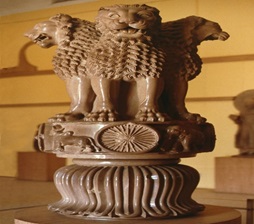 Kautilya’s Arthshastra, compiled in about 300BCE, consists of 15 books (adhikaranas). The first five deal with internal administration (tantra). The next eight with inter-state relations (avapa). The last two with miscellaneous topics. Arthashastra remained the guiding document for policy and administration. Role of espionage in statecraft was stressed. Kaultilya gives description on how a king’s daily routine should be and how king should conduct the business. The state had seven limbs (SaptÄá¹ga RÄjya): SvÄmÄ« (the king), AmÄtya (ministers), Janapada (territory and people), Durga (the fortified capital), Koá¹£a (the treasury), Daṇá¸a (“punishment is the science of governanceâ€), Mitra (ally).
Kautilya’s Arthshastra, compiled in about 300BCE, consists of 15 books (adhikaranas). The first five deal with internal administration (tantra). The next eight with inter-state relations (avapa). The last two with miscellaneous topics. Arthashastra remained the guiding document for policy and administration. Role of espionage in statecraft was stressed. Kaultilya gives description on how a king’s daily routine should be and how king should conduct the business. The state had seven limbs (SaptÄá¹ga RÄjya): SvÄmÄ« (the king), AmÄtya (ministers), Janapada (territory and people), Durga (the fortified capital), Koá¹£a (the treasury), Daṇá¸a (“punishment is the science of governanceâ€), Mitra (ally).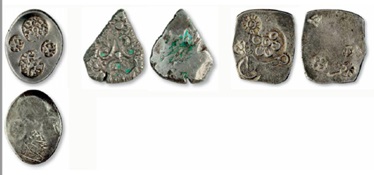 Agriculture was the most important economic activity. Rains, fertility of soil, energy and ability of cultivators are reported by Greek travelers. Main industries were making weapons, weaving textiles, brewing liquor, making salt, and manufacturing jewelries. Gambling, betting, rest houses were the service industries. Structured usage of coins was prevalent in this period. Kingdoms punch marked their coins with various motifs. Coins of few kingdoms are shown in Figure 3. Metals mined were gold, copper, lead, tin, and iron. Vindhyas in south provided iron, copper, and other stones.
Agriculture was the most important economic activity. Rains, fertility of soil, energy and ability of cultivators are reported by Greek travelers. Main industries were making weapons, weaving textiles, brewing liquor, making salt, and manufacturing jewelries. Gambling, betting, rest houses were the service industries. Structured usage of coins was prevalent in this period. Kingdoms punch marked their coins with various motifs. Coins of few kingdoms are shown in Figure 3. Metals mined were gold, copper, lead, tin, and iron. Vindhyas in south provided iron, copper, and other stones.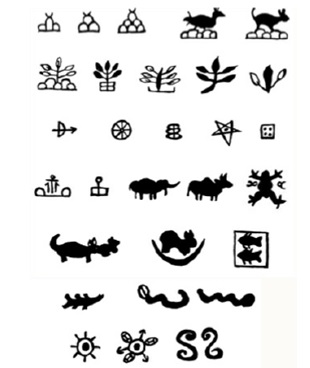 Figure 4 depicts various symbols used in Mauryan coins. Cooperatives of workmen existed. One of the prominent value of coins was one pana. A paṇa was minted in a rectangular shape and consisted of 11/16th part of silver, 1/4th part of copper, and 1/16th part tin, or lead, or antimony, or iron. Coins were made in one paṇa, ½ paṇa, ¼ paṇa and 1/8 paṇa. value of coins was proportional to its weight.
Figure 4 depicts various symbols used in Mauryan coins. Cooperatives of workmen existed. One of the prominent value of coins was one pana. A paṇa was minted in a rectangular shape and consisted of 11/16th part of silver, 1/4th part of copper, and 1/16th part tin, or lead, or antimony, or iron. Coins were made in one paṇa, ½ paṇa, ¼ paṇa and 1/8 paṇa. value of coins was proportional to its weight.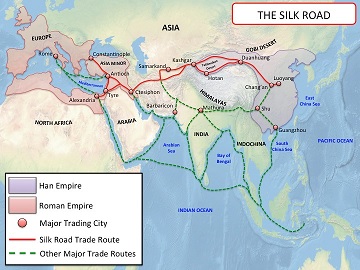
You may also access this article through our web-site http://www.lokvani.com/


Figure 1 – Chandragupta Maurya empire at 320 BCE

Figure 2 – Ashoka’s pillar edict with symbol (Image courtesy from Wikipedia by Chrisi1964)**

Figure 3 - Silver punch marked coins of Kashi, Koshala and Magadha

Figure 4 – Templates used in Mauryan coins

Figure 5 – Trade routes India 300BCE (Wikipedia)